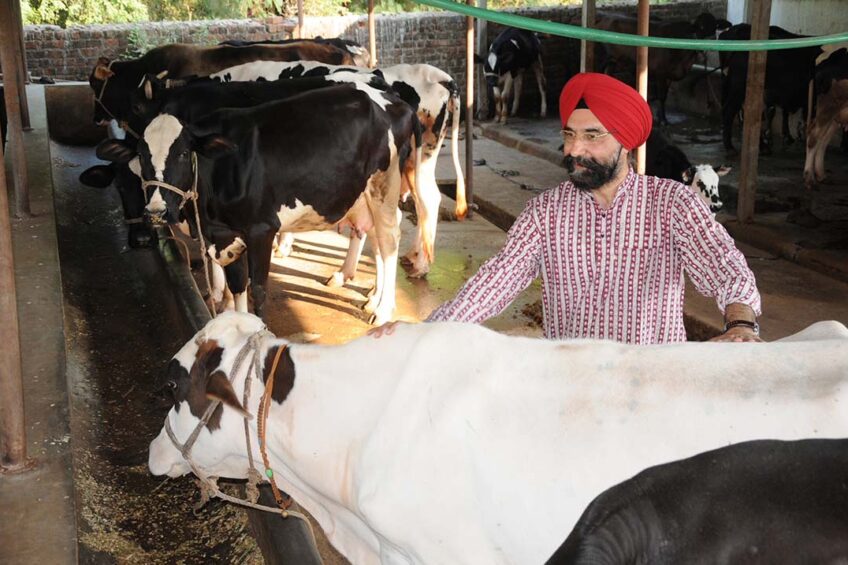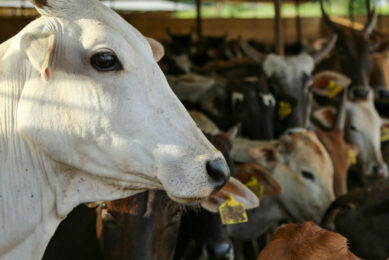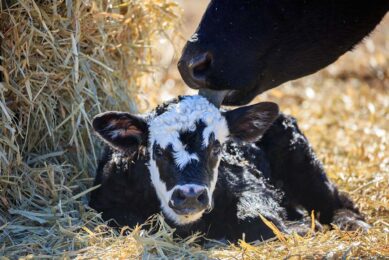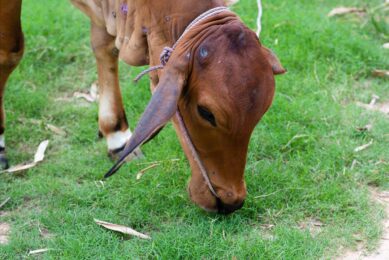Aiming for a prosperous dairy sector in India

India is a country with much to offer, especially in terms of milk production. The dairy sector is one of India’s largest and fastest-growing industries, however, it is not without its own set of challenges. It already plays a significant role in being a leading milk producing country, but how will its story unfold in the expanding population in the coming years and what are the challenges? Dr Rupinder Singh Sodhi, president of Indian Dairy Association (IDA), gives us an insider’s view.
The dairy sector in India is an important one within the country’s agricultural realm. It is a way of life and the livelihood for many farmers and it pays an important role in India’s agricultural economy. India’s dairy sector has grown over the years, currently making a contribution to world milk production of nearly 24%, and with more demand in the country expected in the coming years.
Despite these factors and the sector being a major contributor to the country’s economy, the Indian dairy industry faces some challenges and there is still work to be done to ensure a prosperous sector in the future.

India’s sector is made up of 80 million small dairy farms, each of which have 2 or 3 animals on average. Dr Sodhi from the Indian Dairy Association points to factors that play a vital role in keeping the sector thriving. He notes that the government provides dairy cooperatives with financial support and backing and mentions that the country’s nearly 1.5 billion people enjoy dairy as part of their 3 meals a day. In addition, a big part of the population is vegetarian – for them and non-vegetarians, milk is a source of nutrition and offers nutrients in the form of calcium, minerals, and proteins.
Dairy challenges
Dr Sodhi comments that the dairy sector has come a long way in the last 50 years. “Back then, we were a milk-deficit country very much dependent on imports. It has changed so much that over the last few years it has become the world’s largest milk producer. Production has multiplied over the years.” The expanding dairy sector hasn’t evolved without facing issues. With a limited amount of high-yielding animals, he says that productivity is low per cow and per buffalo.
Feed prices as well as feed efficiency are concerning issues, just like elsewhere. On the genetics side, “What we need is a better-bred animal,” says Dr Sodhi, adding that improved genetics will play an integral role in the further success of the sector, and an animal that is equipped with better feed efficiency. With improved breeding practices high on the agenda, the sector has an increased interest in sexed semen and this is being encouraged by the government. With the nationwide artificial insemination (AI) programme MAIRITIs (Multi-Purpose Artificial Insemination technicians in Rural India), AI services are increasingly available, says a USDA report.
Dr Sodhi also notes that heifers that have not yet calved form a focal point on farms. Ensuring proper welfare, feed, management, there is allocation of a larger budget from the government for healthier animals to combat and prevent mastitis, foot-and-mouth disease, and to have vaccines available to ensure that they are top performers in the herd. Overall, India’s Livestock Health and Disease Control programme had a budget equivalent to US$1.8 billion in 2023, the USDA states. The programme is geared to providing quality veterinary care.
Dr Sodhi notes that reducing the cost of milk production is also a priority. “We want to keep prices relatively stable and increase milk per capita. This is important and is only possible if you reduce cost of production.”
Along with these points, Dr Sodhi adds that safeguarding the Indian dairy industries from cheap imports is of major importance. “In India, dairy is a livelihood not just a part of a business operation.”
Driven largely by production shortages occurring during seasonal gaps, India imports limited quantities of milk and milk products. The supply of fluid milk is foreseen to improve in 2024, which will lower the need for imports, according to the USDA.
Sustainability
Dr Sodhi believes that the sustainability concept can sometimes be seen with only emphasis on the emissions part of the sector. “Sustainability in India also means supplying the important nutrients to Indians, ensuring livelihoods of farmers, and therefore food security. Consumers want good food, and good tasting food at an affordable price. Being able to afford the prices is an aspect that reflects the longevity and success of the sector,” he states.
 India offers a variety of dairy-based cuisines that are unique to its diverse culture. Paneer, a soft and non-melting kind of cottage cheese, is very popular in the north. Milk and curd are also part of everyday meals and in beverages including tea, coffee, and lassi. In 2024, India’s number of bovine milk cows is forecast to grow to 61.5 million head, up some 500,000 head from the USDA official 2023 estimate of 61 million head. Cow milk production in 2024 is expected to reach 102 million metric tonnes thanks to the increased number of cows in milk production.
India offers a variety of dairy-based cuisines that are unique to its diverse culture. Paneer, a soft and non-melting kind of cottage cheese, is very popular in the north. Milk and curd are also part of everyday meals and in beverages including tea, coffee, and lassi. In 2024, India’s number of bovine milk cows is forecast to grow to 61.5 million head, up some 500,000 head from the USDA official 2023 estimate of 61 million head. Cow milk production in 2024 is expected to reach 102 million metric tonnes thanks to the increased number of cows in milk production.
The government is allocating US$1.32 billion over 5 years (2021-2026) to facilitate the growth of the dairy sector through special schemes and programmes. India is the highest consumer of milk and its population consumes the bulk of its milk production (Figure 1), this is expected to continue for the foreseeable future.
Milk production will not only continue to be a main and source of livelihoods in rural India but also will continue to serve as an important protein and nutrient-rich source in the country. Dr Sodhi is confident: “By 2050, India will provide 45% of the world’s milk production. Considering the growth realised over the past few years, this is definitely achievable.”










